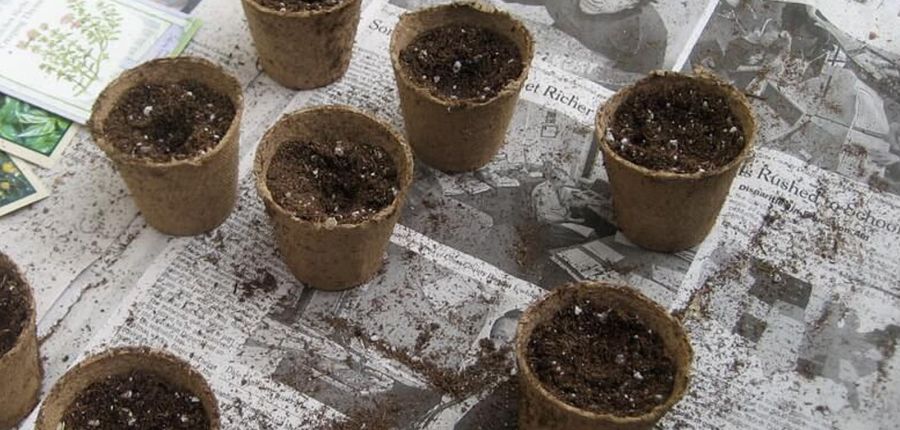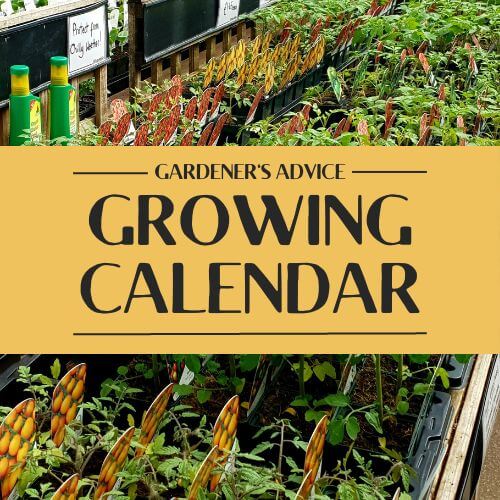Sowing seed in modules, pots or trays
Posted By: rocket veg Category: Growing Veg, Seasonal AdviceLate winter and yet another cold, wet afternoon on the allotment. I’m champing at the bit to make a start but after all the rain, not to mention the havoc wreaked by storms ‘Ciara’, ‘Dennis’ and ‘Jorge’, the soil is saturated - far too wet to be worked without doing serious damage to its delicate structure (note to self: time to explore No-Dig maybe?). In spite of the urge to make a start, it’s still too early for direct sowing of nearly all varieties of vegetable seed so I console myself by taking refuge in my wonderful greenhouse and watch the chilly drizzle drifting past.
What to sow now – and how
Most vegetables are classed as ‘annuals’ which means they grow and produce a crop in a single season. If you want to be rewarded with lots of tasty produce, follow the guidelines on the seed packet and sow as early as possible to maximise the growing period so here are a few suggestions if you want to make a start and have somewhere suitable to put your various seed trays and pots.
Broad Beans: easy seed to handle by little fingers if you have a young helper with you. I’ve tried various methods of sowing – 10 or so seeds spaced out in a largish pot filled with compost (peat-free please!) or single seeds in individual pots. The germination rate of broad beans is generally good, so in a few weeks you should have sturdy little plants all ready for planting out in mid-April. Try Bunyards Exhibition or Masterpiece Green Longpod.
Beetroot and Leaf Beet: This year I’ve sown single seeds in modules – cells made from cardboard (biodegradable, single use) or moulded plastic (reusable). I fill the modules with seed compost, then sit a single seed on top in each cell and gently press it down using a chopstick before covering with a sprinkling of compost. I’ve sown the following varieties of beetroot: Bolthardy (always reliable), Boldor (yellow flesh) and Barbabietola di Chioggia (stunning deep crimson and white ringed flesh); and Perpetual and Rainbow Lights leaf beet which both crop well.
Peas: more seeds which are easy to pick up and place in modules or small pots. I use the narrow end of a dibber to make a small hole in the damp compost, pop a seed in each and cover. My favourite varieties are Early Onward and Alderman – the former, low-growing; the latter will need support as they grow tall. Once the pods begin to form, don’t forget to protect your crop from birds or you’ll lose the lot!
Leeks: tricky little seeds to sow as they are dark blackish-brown, so once placed on the surface they are indistinguishable from the compost! A trick when sowing it to dampen the end of a matchstick, then touch it down on a seed which can then be transferred to the surface of the compost. Cover with a fine layer. There are several tried and trusted varieties of leek, but I find that Musselburgh always does well and produces thick, tasty stems which stand well in the worst winter weather.
Watering
Always water the compost or soil before sowing seed so as to avoid dislodging smaller seeds and the risk of creating pockets of water in the soil which will rot the seed before it germinates. This applies to seed sown directly in open ground as well as in trays, pots or modules.
Labelling
Once sown, don’t forget to label your pots or seed trays - any way which suits your style of gardening, in my case the type of veg/name of variety/date sown (eg Lettuce/Webb’s Wonderful/5 March)
Planting out
Once your seeds have germinated and the seedlings are developing well, don’t be in a hurry to plant in their final position. Cold, wet soil will set the plants back at the very time when they need to put on growth so if you really must plant out, cover with horticultural fleece well weighted down at the edges.







